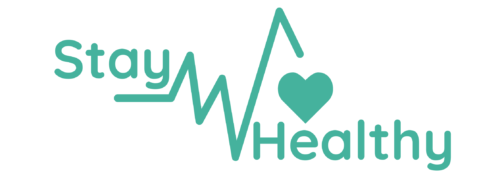EHRs are digitalized versions of patients’ charts that can be shared with other providers who may also be involved in patient care.
This helps clinicians make the best decisions and improve patient outcomes. Additionally, it saves time by removing the need to manually transfer data from paper charts to electronic ones or write and decode hastily written orders.
Contents
Continuity of Care
When using electronic health records like DocStation, it is essential to ensure that patients can maintain continuity of care. This means that their health data should be available at all times and can quickly move between healthcare providers and institutions.
Continuity of care is ideal for both patients and healthcare professionals. For patients, it is the experience of having a continuous caring relationship with an identified health professional; for providers, it is the delivery of a seamless service through integration, coordination and the sharing of information between different care providers.
Studies have found that continuity of care reduces all-cause mortality, hospital use and adherence to medication. It also improves patient satisfaction and satisfaction with the quality of care.
Nurses are an essential part of the continuity of care process, both at the point of service and in facilitating the transition between health departments and external networks. They can play an active role in promoting policies and procedures that encourage continuity of care and helping healthcare administrators establish systems that facilitate the coordination of services between medical units within an organization.
Continuity of care is a complex process involving many people and various healthcare professionals. To ensure that it occurs, health professionals and organizations must work together to communicate, cooperate, and agree on each person’s care. This is called interdisciplinary care.
Patient Access
Patient access to their medical records is a powerful tool to empower patients and improve their health. Having more control over their healthcare decisions can reduce medical errors, improve self-care, prevent chronic illness and assist in managing healthcare costs.
In some studies, providing patients with patient portals or mobile applications has improved patient-doctor communication and engagement. Several studies have found that such interventions may improve patient satisfaction, enhance patient-clinician relationships, and improve adherence to treatment plans.
The ability to access medical records can also lead to a reduction in medication errors. In a study that compared medication adherence between patients who accessed patient portals and those who did not, patients who accessed their EHRs via a patient portal were more likely to take their medications as prescribed (DesRoches et al., 2019).
However, several concerns have been raised about patient portals, including concerns over the privacy and security of medical records and the anxiety that such access may cause. Similarly, several studies have not demonstrated the efficacy of patient portals in improving medication management safety.
The Cures Act provisions are currently being implemented by the Office of the National Coordinator for Health Information Technology (ONC) and the Department of Health and Human Services. These provisions aim to give patients more control over their health data by making electronic health records more open and accessible. Under these regulations, healthcare providers must provide their patients with their complete electronic health records in digital format, free of charge.
Patient Engagement
Patient engagement is critical for health systems that use electronic health records. Patients need to be able to access their histories at any time, and they need to be able to ask questions about their medical conditions and treatment options.
When patients are engaged, they will better understand their condition and will be more likely to comply with recommended treatments. This is important because it can help improve health outcomes and lower costs.
However, patients can only fully engage if they take active steps to improve their health. For example, they can be more proactive about their care by exercising regularly, eating nutritiously, and staying on top of preventive screenings.
In addition to improving patient outcomes, patient engagement also reduces healthcare costs and increases efficiency. For instance, patients more actively involved in their care can save money by avoiding unnecessary emergency room visits or hospitalization visits.
Patient engagement is a growing trend in health care. It involves several strategies that promote a more user-centered approach to service design and delivery, a more even distribution of power, and new competencies. In addition, it helps promote positive shifts in organizational culture by encouraging a more collaborative team dynamic.
Patient Confidentiality
The electronic medical record (EMR) offers significant benefits to the patient, including ease of portability and communication.
Physicians are responsible for protecting your information and must abide by the federal laws and policies governing the use of EMRs. These regulations are designed to ensure your personal health information stays safe and private while protecting the healthcare system from financial and legal risks.
Patient confidentiality is a core principle of the patient-physician relationship. Doctors have a right to release their patients’ medical information for treatment and payment purposes only when they have your consent or if it is otherwise permitted by law.
Physicians must be aware of their privacy and security policies and share them with all staff. These policies must address computer system backups and maintenance, data storage, incident reporting, and security issue resolutions.
Unlike paper-based records, electronic records are automatically recorded as they are completed by physicians and other healthcare providers. The information is then able to be easily retrieved, reviewed and used.
Electronic medical records contain personal identifiers like names, addresses, social security numbers, phone numbers and other information that can link a patient to a diagnosis or condition. This is called “protected health information” (PHI).



